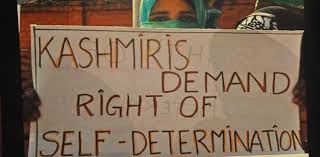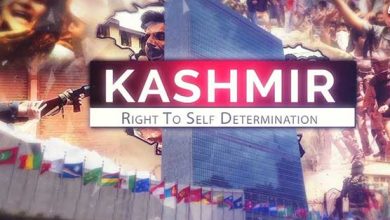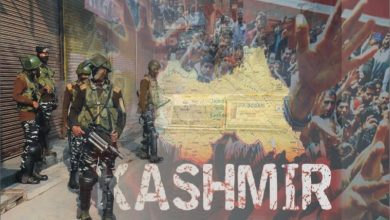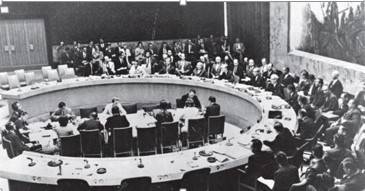 This year marks another year of injustice and unspeakable horrors for the people of Indian illegally occupied Jammu and Kashmir. The historical Kashmir conflict serves as a legacy of unjust division during the Indo-Pak partition of 1947. Since then, the people of IIOJK have been resisting the illegal occupation, the stranglehold of which becomes tighter with each passing day. Amongst the many dates that are painful reminders of the Kashmiri dilemma, is the 5th of January. It was the samedate in 1949 when the people of Kashmir were provided with a ray of hope, a promise that ultimately failed to materialize. The Kashmir conflict was born out of the flawed partition of British India in 1947. Princely states were left to choose whether to join India or Pakistan. Since Jammu and Kashmir were a Muslim-majority area, Pakistan had a legitimate claim to it. However, the delayed decision between India and Pakistan by the Hindu monarch of Kashmir Maharaja Hari Singh created a political vacuum and led to unrest in the region. The unrest further escalated after the Indian military sent its troops in October 1947, under the claim that the Maharaja had signed the instrument of accession. This action marked the beginning of an era of tyranny and suffering for the Kashmiri people.
This year marks another year of injustice and unspeakable horrors for the people of Indian illegally occupied Jammu and Kashmir. The historical Kashmir conflict serves as a legacy of unjust division during the Indo-Pak partition of 1947. Since then, the people of IIOJK have been resisting the illegal occupation, the stranglehold of which becomes tighter with each passing day. Amongst the many dates that are painful reminders of the Kashmiri dilemma, is the 5th of January. It was the samedate in 1949 when the people of Kashmir were provided with a ray of hope, a promise that ultimately failed to materialize. The Kashmir conflict was born out of the flawed partition of British India in 1947. Princely states were left to choose whether to join India or Pakistan. Since Jammu and Kashmir were a Muslim-majority area, Pakistan had a legitimate claim to it. However, the delayed decision between India and Pakistan by the Hindu monarch of Kashmir Maharaja Hari Singh created a political vacuum and led to unrest in the region. The unrest further escalated after the Indian military sent its troops in October 1947, under the claim that the Maharaja had signed the instrument of accession. This action marked the beginning of an era of tyranny and suffering for the Kashmiri people.
The resistance to this illegal occupation by India led to the first Kashmir War of 1947-48. The United Nations intervened in January 1948, establishing the United Nations Commission for India and Pakistan under UNSC resolution 39. As a part of UNCIP’s effort to mediate the Kashmir conflict, a resolution was passed on January5th, 1949. This resolution provided a broader framework to resolve the conflict and laid down a three-step plan, ceasefire, truce terms, and plebiscite. The resolution consisted of three parts, the first part was the cease-fire order. The governments of India and Pakistan were asked to let their respective high commands issue a separate and simultaneous cease-fire order. Under Part I (d) of the resolution, the commission was tasked with appointing military observers to supervise the observance of the cease-fire order with the cooperation of both commands. The second part of the resolution focused on withdrawing troops from both sides, while the final part proposed a plebiscite as the ultimate solution to the Kashmir issue.
However, this resolution failed to achieve its objectives, since both India and Pakistan refused to withdraw their forces first. India agreed to the ceasefire but opposed holding a plebiscite in the region, citing political and security concerns, and claimed that the region’s accession to India was final. On the other hand, Pakistan agreed on the cease-fire and troop withdrawal and emphasized the role of a plebiscite. Pakistan viewed the plebiscite as the most legitimate way to resolve the issue, as it believed that Kashmir should join Pakistan due to its Muslim-majority population. The people of IIOJK have also openly expressed their desire to join Pakistan. The January1949 resolution was ineffective due to India’s reluctance to demilitarize.To soothe the hostilities in the region through the successful conduction of a plebiscite, the UNCIP passed another resolution on January 5, 1949. This resolution focused on the plebiscite mechanism, ensuring a transparent and free plebiscite. It again emphasized the Kashmiri people’s right to self-determination under UN supervision. A plebiscite administrator was to be nominated and responsible for organizing and conducting a free and impartial plebiscite. This resolution provided hope to the people of IIOK that they would finally be able to get their right to self-determination, however, the plebiscite never took place. Like the January 1949 resolution, this resolution proved ineffective as the Indian administration again created obstacles in its execution. Under section 6 (B) of the resolution, “All persons (other than citizens of the State) who on or since 15 August 1947, have entered it for other than lawful purposes, shall be required to leave the State.” However, instead of enforcing this, India continued settling its citizens in Kashmir, culminating on August 5, 2019, with the abrogation of Articles 35A and 370. This move was aimed at altering Kashmir’s demographic composition. India began granting Kashmiri domicile certificates to non-Kashmiri citizens, allowing them to purchase land in IIOJK. The removal of Article 370 stripped the region’s residents of their special status, furthering efforts to legitimize India’s occupation and atrocities in the area. Now and then, innocent citizens are tortured and brutally killed by the Indian military. They target people, ransack their houses, arrest innocent civilians under any false pretext, torture them, and kill them. This includes the elderly, women, and children as well.
Amidst such cruelties, the people of IIOJK still resist and stand up for their right ofself-determination. The growing silence of the international community is taken by the Indian government as a green signal to continue the barbarity. Every effort to resolve this issue has been undermined by India’s non-serious and casual attitude. In essence, while the January 5, 1949 resolution provided a broader framework, the January resolution narrowed the focus to the plebiscite, but both were compromised by the lack of political will and cooperation, especially on India’s part.
 Note: The views expressed are those of the writer, a BS International Relations student at NDU, Islamabad, and an intern at the Kashmir Institute of International Affairs. These views do not necessarily reflect the opinions of Kashmir Media Service.
Note: The views expressed are those of the writer, a BS International Relations student at NDU, Islamabad, and an intern at the Kashmir Institute of International Affairs. These views do not necessarily reflect the opinions of Kashmir Media Service.







